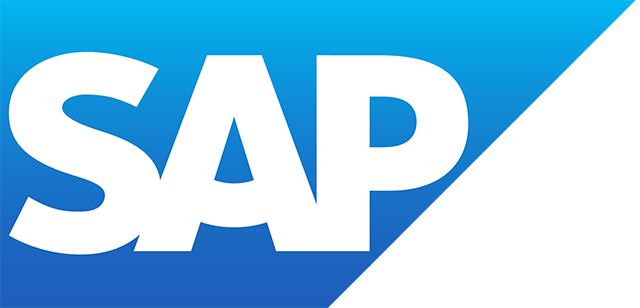SAP Cloud Migration
Filter By
Browse By
- SAP Analytics and AI
- SAP Application Development and Integration
- All SAP Application Development and Integration
- SAP ABAP
- SAP ABAP Development Tools
- SAP ABAP Test Cockpit
- SAP API Management
- SAP BAPI
- SAP Basis
- SAP BRF
- SAP Business Application Studio
- SAP CMS
- SAP Design Studio
- SAP Development Tools
- SAP DevOps
- SAP EAI
- SAP EDI
- SAP Extension Suite
- SAP Fiori
- SAP Fiori Elements
- SAP Integration Suite
- SAP Low Code Application Development
- SAP Low Code Automation
- SAP Netweaver
- SAP Release Management
- SAP UI5
- SAP Web Application Server
- SAP Web IDE
- SAP Business Process Management
- SAP Center of Excellence
- SAP CIO
- SAP Customer Experience
- SAP Data and Data Management
- All SAP Data and Data Management
- SAP BW
- SAP BW/4HANA
- SAP Crystal Reports
- SAP Data Archiving
- SAP Data Center
- SAP Data Governance
- SAP Data Integration
- SAP Data Migration
- SAP Data Quality
- SAP Data Services
- SAP Data Strategy
- SAP Data Visualization
- SAP Data Warehouse Cloud
- SAP DMS
- SAP Document Control
- SAP EIM
- SAP ETL
- SAP ETL Tools
- SAP HANA
- SAP HANA Administration
- SAP HANA Deployment Infrastructure
- SAP HANA Studio
- SAP Master Data
- SAP Master Data Governance
- SAP MDM
- SAP Enterprise Architect
- SAP Enterprise Asset Management
- SAP ERP
- SAP Finance
- All SAP Finance
- SAP Accounting
- SAP AR AP
- SAP Asset Accounting
- SAP Billing Systems
- SAP BPC
- SAP BRIM
- SAP Cash Management
- SAP Central Finance
- SAP Controlling
- SAP COPA
- SAP Cost Center Accounting
- SAP e-invoicing
- SAP FICO
- SAP Finance Automation
- SAP Financial Closing Cockpit
- SAP Financial Consolidation
- SAP Financial Planning
- SAP FX Risk
- SAP General Ledger
- SAP Global Tax Management
- SAP Hyperion
- SAP Order to Cash
- SAP Payment Processing
- SAP Profitability Analysis
- SAP Rebate Management
- SAP S/4HANA Finance
- SAP Universal Journal
- SAP Governance Risk and Compliance
- SAP Human Capital Management
- SAP Intelligent Technologies
- SAP Platform and Technology
- All SAP Platform and Technology
- SAP Business Technology Platform
- SAP Cloud Connector
- SAP Cloud Integration Platform
- SAP Cloud Migration
- SAP Cloud Platform
- SAP Cloud Providers
- SAP Cloud Strategy
- SAP Container Platform
- SAP Digital Asset Management
- SAP Digital Integration Hub
- SAP Digital Signature
- SAP HANA Enterprise Cloud
- SAP HEC
- SAP Hyperscalers
- SAP Infrastructure
- SAP Messaging
- SAP Smart Forms
- SAP Quality and Testing
- SAP Security
- SAP Spend Management
- SAP Supply Chain Management
- All SAP Supply Chain Management
- SAP APO
- SAP Asset Management
- SAP Business Network
- SAP Digital Manufacturing Cloud
- SAP Digital Twin
- SAP EWM
- SAP IBP
- SAP Inventory Management
- SAP Label Printing
- SAP Logistics
- SAP Manufacturing
- SAP Manufacturing Automation
- SAP MES
- SAP MII
- SAP MM
- SAP MRO
- SAP MRP
- SAP Order Management
- SAP Plant Maintenance
- SAP PLM
- SAP Production Planning
- SAP S&OP
- SAP SD
- SAP SPM
- SAP Supply Chain Planning
- SAP Track and Trace
- SAP Transportation Management
- SAP System Administration
What is SAP Cloud Migration?
Moving to the cloud has become increasingly critical for SAPinsiders today as they look to replace existing hardware and infrastructure that no longer delivers the required performance. Initial moves to the cloud were largely focused on putting in place infrastructure that provided more flexibility and scalability while being able to deploy systems more quickly. Today’s SAP Cloud Migration involves integrating SAP and non-SAP systems, architecture redesign, hybrid cloud environments, and multiple cloud providers. Today’s cloud migration focus is also on increasing security while managing cost. These two requirements were the most important in 2021 research conducted by SAPinsider on moving SAP workloads to the cloud and continue to be crucial for organizations planning for long-term cloud success.
What is SAP Cloud Migration?
Moving to the cloud has become increasingly critical for SAPinsiders today as they look to replace existing hardware and infrastructure that no longer delivers the required performance. Initial moves to the cloud were largely focused on putting in place infrastructure that provided more flexibility and scalability while being able to deploy systems more quickly. Today’s SAP Cloud Migration involves integrating SAP and non-SAP systems, architecture redesign, hybrid cloud environments, and multiple cloud providers. Today’s cloud migration focus is also on increasing security while managing cost. These two requirements were the most important in 2021 research conducted by SAPinsider on moving SAP workloads to the cloud and continue to be crucial for organizations planning for long-term cloud success.
Key Considerations for SAPinsiders:
- Spend time understanding whether your SAP Cloud Migration concerns are valid. Many organizations have concerns about challenges with moving to the cloud. These include topics such as cost, security, availability, performance, and the complexity of integration. But some of the concerns may be misconceptions. Taking the time to educate teams on topics around cloud migration is an important part of the process. Just as important is understanding what your concerns are and determining how valid those concerns may be. This article by Axel Streichardt discusses some of these challenges and how SAP customers can address them to ensure cloud success.
- SAP workloads are increasingly moving to cloud environments. In research that SAPinsider conducted in the second half of 2021, 88% of respondents indicated that they are running at least some SAP workloads in the cloud. More workloads are being moved to the cloud over the next two years, particularly solutions like procurement, customer relationship management, analytics, travel and expense, and finance. The biggest factors that are part of those decisions to move are greater flexibility, the deployment mode, increased scalability, and distributed data scenarios.
- Understand what type of cloud you need to meet your organization’s requirements and what will best support them in the future. An SAP Cloud Migration can involve private cloud, public cloud, managed service providers, or some sort of hybrid landscape. Some may offer the best benefits today, while others may be needed if planning for the future. Spending the time to look at what your organization needs today and what is important for the future is a critical step in any cloud migration. This may also involve learning from what other organizations have done and why those choices were the right ones for them. In this article multiple executives were asked about their cloud choices, why they worked then, and what they have planned for the future.
132 results
-

oXya Auto Ops Suite
Does repetitive manual IT operations inhibit your business agility and impact your bottom line?
-

Ensuring Cybersecurity in Cloud Deployments with oXya
Reading time: 2 mins
It is best to have a well-defined incident response plan in place, both before and after moving to the cloud or deploying SAP S/4HANA, to quickly address any breach. oXya provides advanced security and IAM solutions.
-

Intel and SAP Enable Cloud Migration and Advantages
Intel and SAP bring you faster access to more data in the cloud with SAP HANA instances optimized on Intel® Xeon® Scalable processors and Intel® Optane™ persistent memory technology. Businesses are migrating to the cloud, enabling operational automation, on-demand elasticity, security, and compliance capabilities.
-
-

Benefits of Migrating to RISE with SAP on Google Cloud
Reading time: 2 mins
Google Cloud provides a secure way of migrating to the cloud by reducing the risks involved and delivering quick time to value. Their team of SAP on Google Cloud experts can facilitate an easy and safe passage to digitally transform. In addition, companies making the move to RISE with SAP can leverage incentives to defray…
-

5 Ways Enterprise Cloud Migration Improves Sustainability
Reading time: 3 mins
Migrating legacy applications to the Cloud is a sustainable and cost-effective solution for businesses. Cloud providers like Microsoft Azure boast data centers that are 93% more energy-efficient than traditional on-premises alternatives. This efficiency is due to economies of scale, with Cloud data centers housing tens of thousands of servers supported by shared, more efficient power…
-

7 Reasons to Think Outside the Large GSI Box
Reading time: 7 mins
Organizations are increasingly opting for niche system integrators (SIs) for their cloud implementations due to their specialized expertise and flexibility. Unlike large global system integrators (GSIs) such as Accenture and Deloitte, niche SIs offer deep, focused knowledge and agile solutions tailored to specific needs. By leveraging niche SIs, companies can achieve operational, business process, and…
-

Putting the Cloud in your Legacy Application
Reading time: 3 mins
In the realm of IT strategy, the conversation around legacy systems and the Cloud often centers on migration. However, true transformation lies in making legacy applications more “cloudier” through advanced capabilities like automation and seamless integration. This approach not only optimizes performance and agility but also unlocks the full potential of Cloud-native technologies. Discover how…
-
-

A Decision-Making Framework for Cloud Adoption
Reading time: 5 mins
Adopting Cloud computing offers significant benefits in scalability, reliability, and cost-effectiveness, but it also introduces risks that need careful consideration. To ensure a successful Cloud migration, organizations should follow a structured decision-making framework. Start with a Technology Suitability Analysis to evaluate if Cloud services align with your IT needs. Next, employ Cost Modeling to accurately…
-

Google Cloud Announces Advanced Collaborations at SAP Sapphire 2024
Reading time: 2 mins
At SAP Sapphire 2024, multiple advancements were announced on the collaboration between SAP and Google Cloud. Through the integration of Google Cloud’s generative AI and analytics solutions with SAP applications, companies are able to draw real-time insights from their data. This will be pivotal in making informed decisions and be proactive in handling business challenges.…
-

SAP S/4HANA Transformation with T-Systems: RISE with SAP Premium Supplier
Reading time: 1 mins
Identifying current business challenges and establishing how RISE with SAP will be helpful in solving those issues are parts of this crucial step. Key to the success of the project will be determining the stakeholders who will own the change management process and securing executive sponsorship. T-Systems recently announced their partnership with SAP as a…
Featured Insiders
-

Laura Vetter
CTO and Co-Founder, Evolutio
-

Suraj Gauli
PWC
-

Varun Bhatt
Partner - SAP Rise
Become a Member
Unlimited access to thousands of resources for SAP-specific expertise that can only be found here.
Become a Partner
Access exclusive SAP insights, expert marketing strategies, and high-value services including research reports, webinars, and buyers' guides, all designed to boost your campaign ROI by up to 50% within the SAP ecosystem.
Upcoming Events
Related Vendors
Your request has been successfully sent


